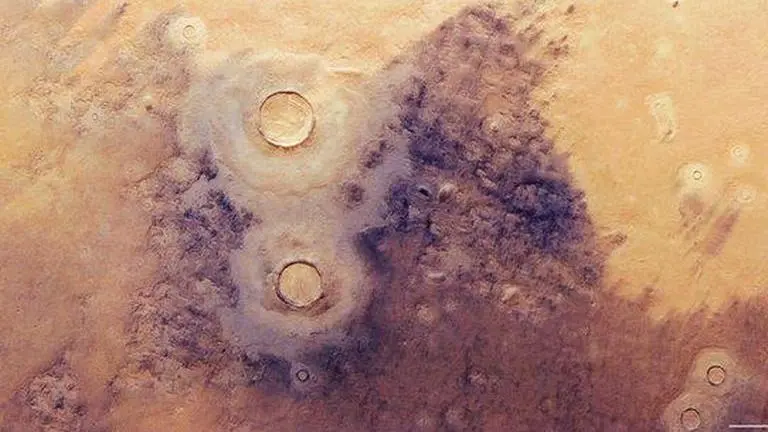Updated 30 March 2022 at 20:52 IST
Mars orbiter beams back new 'icy' images of solar system's biggest impact basin; See
The Mars orbiter snapped images of the ice-related features in Mars’ Utopia Planitia region, which is home to the Solar system’s largest known impact basin.
- Science News
- 2 min read

The Mars Express orbiter, which arrived at the red planet in 2003 and has been orbiting it ever since has beamed back fascinating new photographs. Launched by the European Space Agency (ESA), the orbiter has snapped images of the ice-related features in Mars’ Utopia Planitia region, which is home to the Solar system’s largest known impact basin. The picture shared below features what is one of three major basins in Mars’ northern hemisphere and has a diameter of roughly 3,300 km, said ESA.
New views from ESA’s #MarsExpress reveal fascinating ice-related features in #Mars’ Utopia region – home to the largest known impact basin not only on the Red Planet, but in the Solar System.
— ESA (@esa) March 30, 2022
Read more: https://t.co/KVKaKt4WNH pic.twitter.com/VXYUanMiQB
What’s so special about this region?
ESA says that the Utopia Planitia is an intriguing and ice-rich region as ice has been spotted both at and below the surface. Surprisingly, the ice buried in the region is at great depths, something that was confirmed via observations of fresh craters and pits using radars.
Image: ESA
Explaining the features, the agency pointed out that at the left and right of the two craters are large and smooth patches of surface known as ‘mantled deposits. These deposits are thick layers of ice- and dust-rich material that have smoothed the surface. Interestingly, the same layers were deposited as snow back when Mars’ rotational axis was much more tilted than it is today, around 10 million years ago, according to ESA.
Image: ESA
The second-largest crater seen in the image is even more interesting as it showcases a texture named ‘brain terrain’. It has been named so because of the complex patterns and ridges found on the surface of the human brain. ESA says this resulted after the material deformed and warped in a concentric pattern. Just to the right of the second-largest crater, you can see a dark coloured region that took its current form after the ice-rich ground contracted and cracked at low temperatures.
Advertisement
"These features are the result of ground ice either melting or turning to gas, which then causes the surface to weaken and collapse. Upon closer look, layered mantled deposits can also be seen in and around these scalloped depressions”, the agency said in a report. As for the Mars Express, it has been imaging Mars’ surface for about two decades now and is mapping its minerals, identifying the composition and circulation of the red planet's atmosphere.
Image: Twitter/@ESA
Published By : Harsh Vardhan
Published On: 30 March 2022 at 20:52 IST


